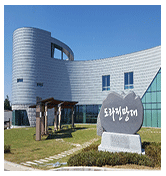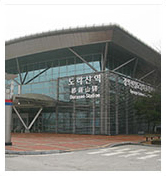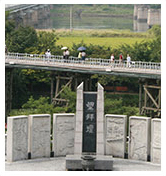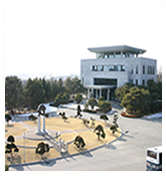 вЦґ The 3rd Tunnel
вЦґ The 3rd Tunnel
The 3rd tunnel was discovered on October 17, 1978. It is located 52km from Seoul. It was estimated to take approximately an hour for 10,000 soldiers to arrive Seoul through the tunnel. When this tunnel was first discovered, North Koreans insisted it was made by South Koreans in a plot to invade North Korea. However, this theory proved eventually to be false. Structure of 3rd Tunnel is 1,635 meter-long, 1.95 meters high and 2.1 meters wide, penetrates 435 meters South of Military Demarcation Line at a point only 4 kilometers South of the Truce Village of Panmunjom.
 вЦґ Dora Observatory
вЦґ Dora Observatory
Situated in Paju(Gyeonggi-do) and at the northernmost point of the Military Demarcation Line of the Western front, Dora observatory replaced the previous Songaksan Observation Post which is located closely. From the observatory visitors can overlook North Korea and itвАЩs various locations including Gaesung, Songaksan, Kim Il Sung Statue and Cooperation farm(Geumnamgol). The Observatory has 500 seats VIP rooms and parking space. It was opened to the public in January 1987.
 вЦґ Dorasan Station
вЦґ Dorasan Station
Dorasan station, a railway station on the Gyeongui Line, is the northernmost stop of South Korea railway line. Located 56km away from Seoul and 205km away from Pyeongyang. the station was opened as tourist attraction on April 4 2002, right before the 2002 Korean-Japan World Cup. Dorasan station can be reached by getting on the Gyeongui Line from Seoul Station.
 вЦґ Imjingak Park
вЦґ Imjingak Park
Imjingak, located 7km away from Southern boundary of De militarized zone, is now the forefront of tourism related to the Korean War. It was built in 1972 with the hope that unification would be possible at someday. Three-storied Imjingak building is surrounded by several Monuments, Unification park and Abductee Center. Outside Imjingak, there are Steam locomotive used by military personals or equipments during Korean War and Freedom bridge used by exchanging prisoners of Korean War. Mangbaedan, which stands opposite of Imjingak, is famous for the place where people from North Korea visit and perform ancestral rites by bowing towards their hometown every Seolnal, New Year Day and Chuseok, Thanksgiving day.
 вЦґ JSA(Joint Security Area)
вЦґ JSA(Joint Security Area)
During the Korean War, the truce talks took place one kilometer north of the present Joint Security Area, four thatch-roofed in houses, 3 temporary building set up specufucally for the meeting. Three Quonset huts were the only structures found in the truce village. The village was moved to an approximately circular area a 800 meters in diameter in the middle of the DMZ, Panmunjom today. In JSA there are 24 main buldings (including a row of seven Quonset huts) across the MDL.
 вЦґ Peace House
вЦґ Peace House
The large gray building is the Republic of Korea's Peace House. It was constructed in 1985 to house talks between North and South that were not Armictice related.
 вЦґ Bridge of No Return
вЦґ Bridge of No Return
Located in the Joint Security Area(JSA), the so-callde "Bridge of No Return" crosses the Military Demarcation Line(MDL) between North and South Korea. It was used for prisoner exchanges at the end of the Korean War in 1953. The name originates from the claim that many war prisoners to be captured by the United States did not wish to return hometown. The prisoners were brought to the bridge and given the choice to remain in the country of their captivity or cross over to the other country. However, if they chose to cross the bridge, they would never be allowed to return and hence the name.
 вЦґ Axe Murder Incidents Area
вЦґ Axe Murder Incidents Area
The axe murder incident(Panmunjom ax murder incident) was the killing of two United States Army officers by North Korean Soldiers on August 18, 1976, in the Joint Security Area(JSA) located in the Korean Demilitarized Zone(DMZ). The U.S. Army officers had been taken part in a work cutting down a poplar tree in the JSA that was alleged to have been blocking the view of United Nations Command(UNC) observers. The incident is also known alternatively as the hatchet incident, the poplar tree incident, and "The Tree Trimming Incident".